


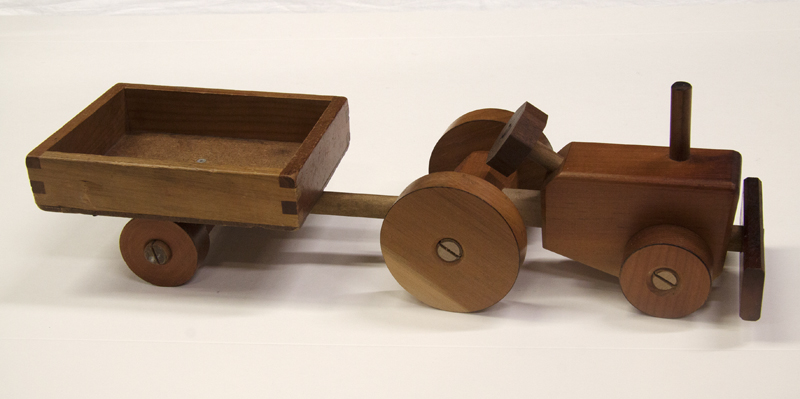
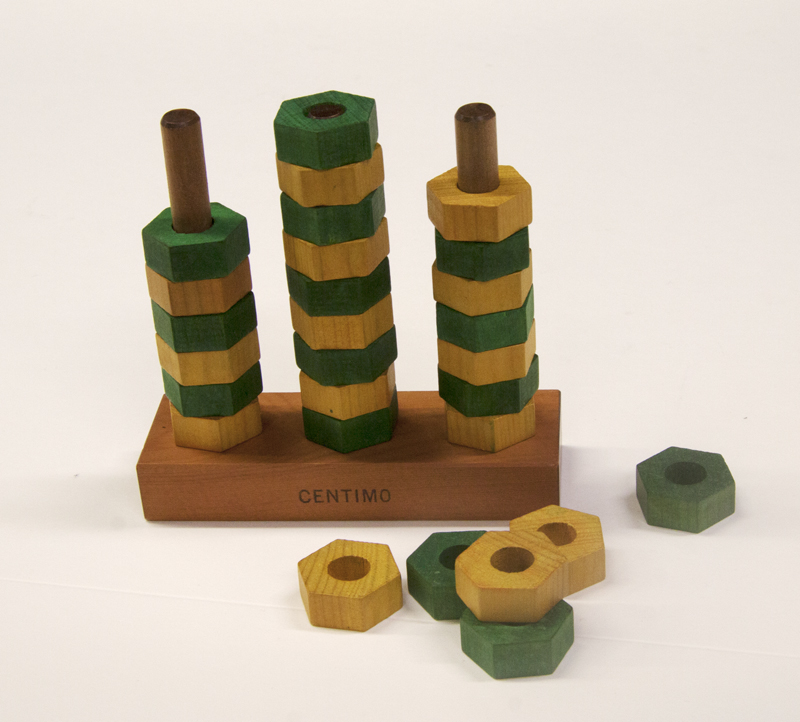
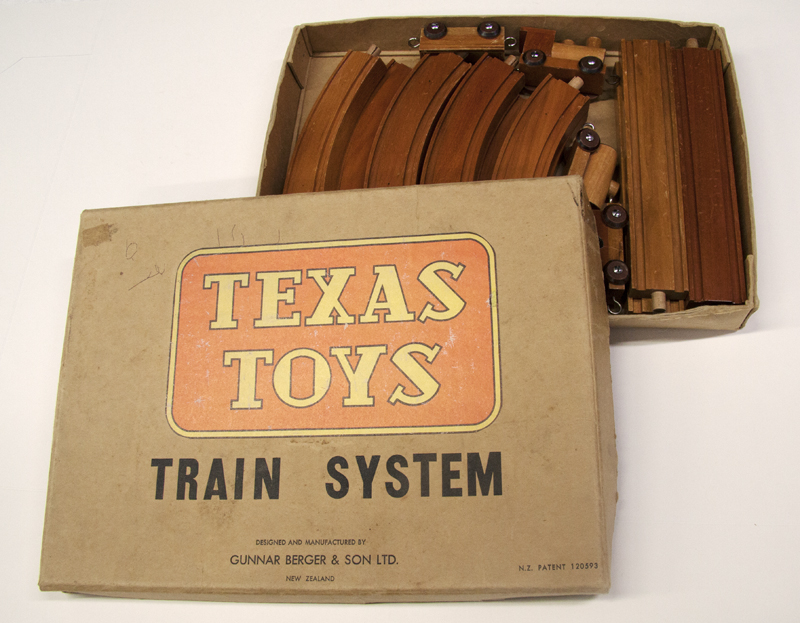
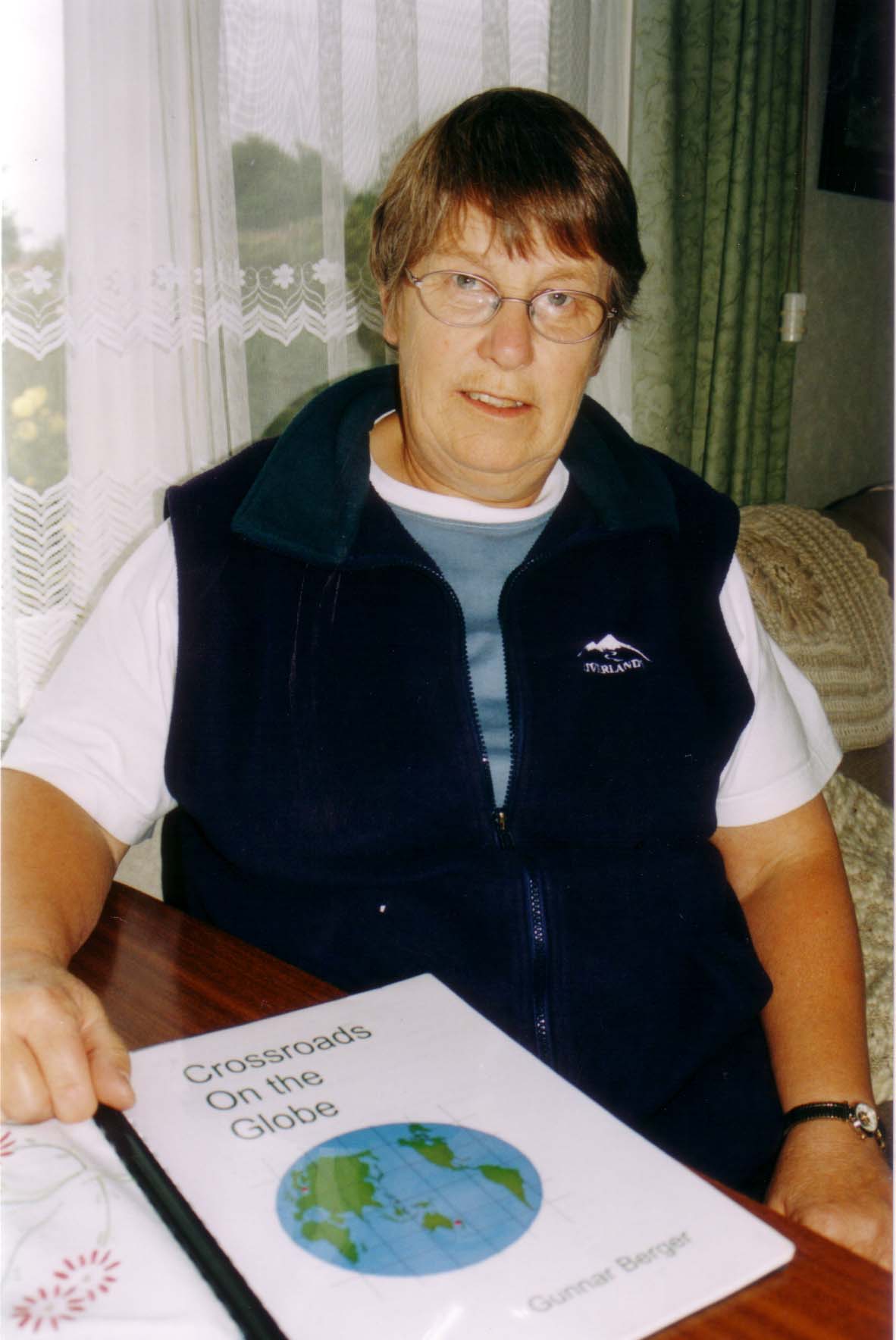
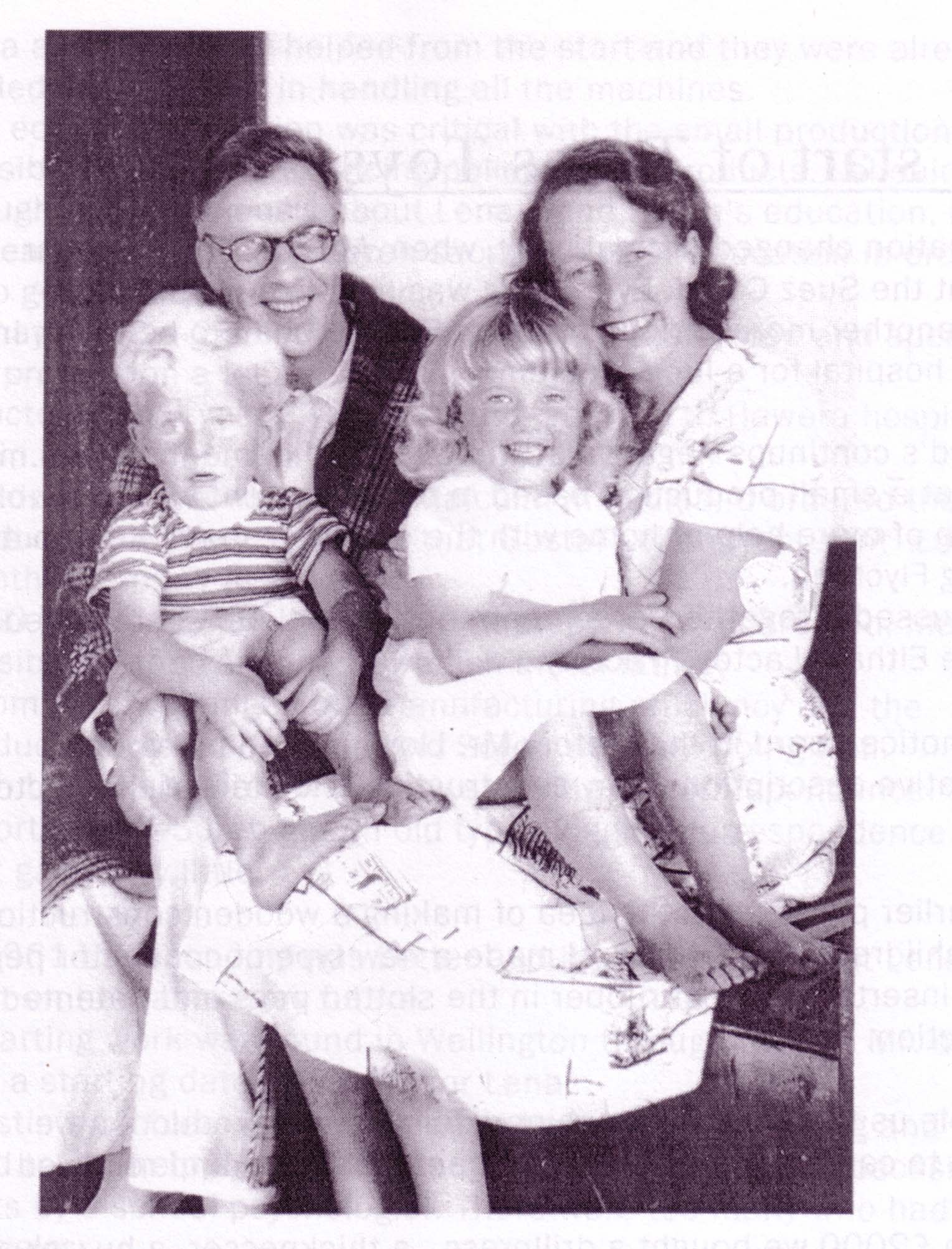
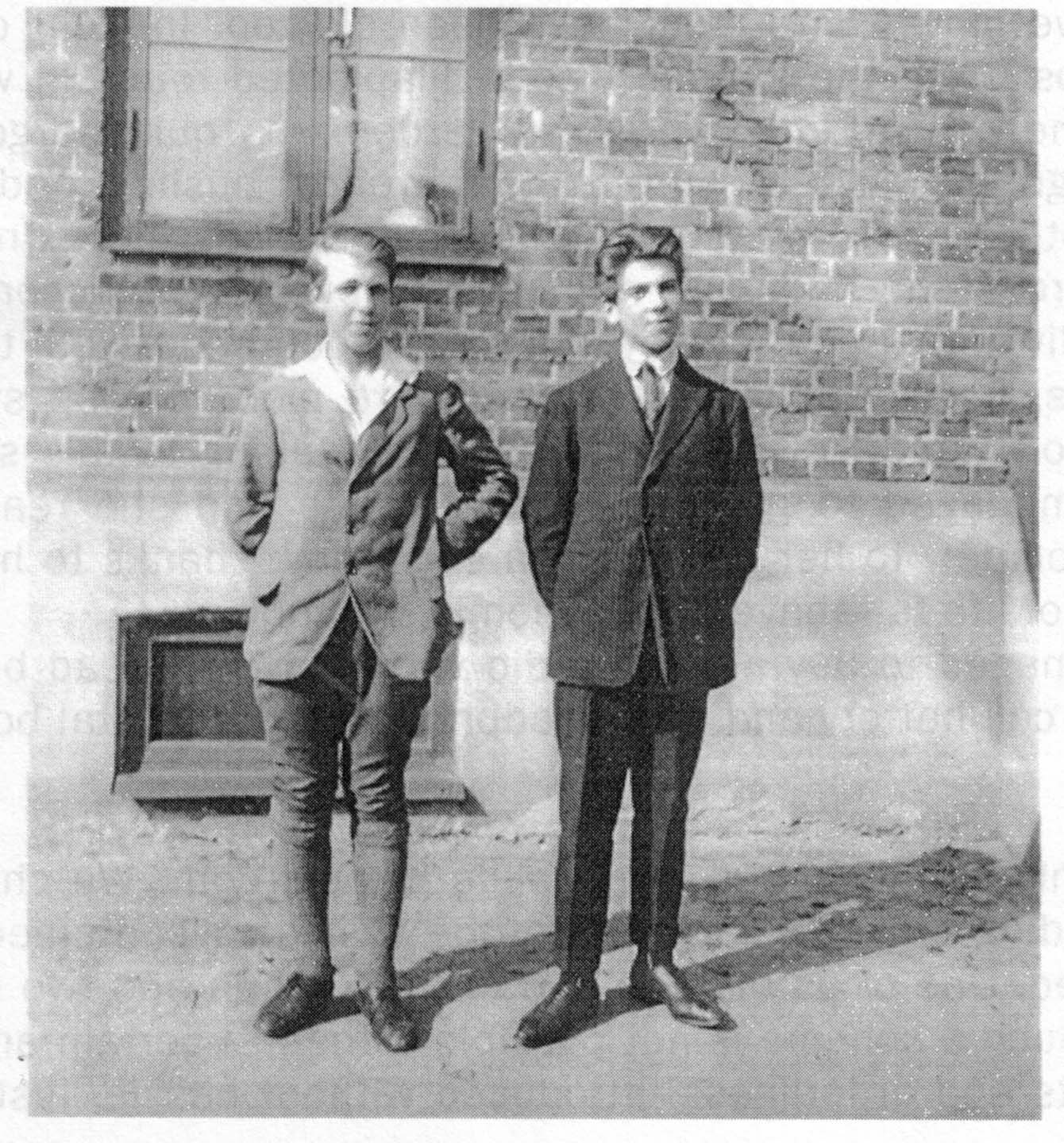
Inventive toymaker Gunnar Berger came to Eltham on a whim over whey. In 1950, the Swede was looking for a fresh start after falling out with management at MilkCentral dairy company in Stockholm. The trigger came the following year, via a Swedish newspaper article about whey being dumped into streams around Eltham in New Zealand.
Knowing lactose (milk sugar) could be extracted from whey, the industrial chemist and engineer felt an urge to visit the small central Taranaki town with the idea of setting up a lactose factory there. "After having worked hard for the MilkCentral for 17 years I was very aware of the drastic step out in the unknown I was taking" he says in his unpublished autobiography.
Within weeks, Gunnar and a financier, Danish millionaire Borup Jorgensen, were standing in the Eltham Pipe Band Hall talking to 300 farmers about the factory proposal. "I held my first speech in English in that hall, and voting for and against my proposal followed" says Gunnar, who learnt the language by reading second-hand novels written in English. The farmers, Eltham Dairy Factory shareholders, voted in favour of the lactose plan.
By August, the Berger family had left for New Zealand. At Gunnar's side were his wife, Margit Leijonflycht (called Flychten), daughter Lena (8) and son Soren (7). Moving from Solna, on the outskirts of Stockholm, to a tiny town in a small country on the other side of the world, was a massive change and one Flychten found difficult to come to terms with. "It's not an easy thing to have to learn a new language and be away from all extended family" Lena says.
But she and Soren did cope. "As children it was easier to be adaptable" she says. "It seemed OK. Dad sort of described it to us as being the Wild West before we came." The reality was far more civilised. "Actually, Eltham in 1951, I must say, was a much more go-ahead place than what it is now" Lena says in 2004.
Pipe-smoking, bespectacled Gunnar was one of those leading the way in the mid-1900s. To set up the lactose operation, he called on the expertise of fellow Swedes Birger Nordmark (a chemist) and Erik Persson (a mechanical engineer), plus Eltham men Les McGonagle and Gordon Commerer. They converted an unused part of the Eltham Dairy Factory and installed stainless steel equipment. "Long hours were necessary - at least 12 hours (and) often 16 hours a day for me and the mechanic" Gunnar writes.
In November 1952, the first shipment of 10,000 kilograms of lactose was exported to India. Whey was transported to the factory in one of the first tankers used in New Zealand's dairy industry. In the following years, the annual sugar milk production was about 500,000kg. The same year India bought the first lot of lactose, Kerstin Berger was born.
Two years later, Peter Berger came into the world - and a new home. "During 1954 we built our dream house just as we wanted it, from our own drawings" Gunnar writes. Lena believes it was the first Eltham home with a basement.
Three years later, Gunnar resigned from the factory because his plan for a second evaporator was vetoed. Lena says her father always needed new challenges. "I think Dad actually found he got more out of actually setting up things. Once things were up and running and it was just production, which was boring..."
In 1958, the operation was bought and closed down by the Kāpuni Lactose Plant.
By then Gunnar had turned to toys. After leaving school at 14, he worked in an engineering workshop where he learnt to use a metal lathe and other equipment. He also had toy-making experience, stemming from a passion he shared with his elder brother, Sven. Gunnar and Sven loved Meccano and even cast their own pieces to expand their construction sets. "It became an addiction and in the end when I had been working for two years and Sven was studying, Kellin (our mother) made us give it away" Gunnar writes.
By this time it was 1924 and Gunnar, Sven, sister Kerstin and their mother were living in a ground floor flat in the southern city of Lund and renting spare rooms to university students.
And they were all still reeling from tragedy. "In 1923 our whole world collapsed" Gunnar writes. "Suddenly one day Dad was missing. For several days we were all terrified. On the third day, my seven-year-old sister, Kerstin, suddenly said 'Dad could possibly be out at our summer house'."
He was - but it was too late. Erik Berger had taken his own life. He was 39 years old. That was not the only such tragedy in Gunnar's life. The other one happened during the Eltham years. But first, the toys.
During his last months at the lactose factory, the inventive Swede began shaping wood to make his own Meccano-type construction sets. With his sets came words of wisdom: "Please be careful not to spoil your children's feelings of achievement and pride by too many suggestions of improvements to their simple models, which, to them, are perfect."
Gunnar dreamed up, designed and made by a whole range of toys, including a covered wagon on which he wrote the word Texas. "So, that's how the name Texas Toys came about" Lena says.
The business began in the basement of the Glentworth Street home. To afford the fit-out, Gunnar and Flychten cancelled their Swedish retirement insurance and received £2000. With that, they bought tools and machinery to make the toys, and spent £400 on a 1939 Chevrolet.
Their two oldest children left school to work in the toy factory, a move Gunnar regretted later in life. "Both Lena and Soren sacrificed their education in order to help get our venture going." The teenagers continued their schooling by correspondence. For Soren, especially, this was difficult. "But traditional education is not everything and Soren is now a well-known wood turner in Christchurch, who spends New Zealand winters in the USA doing workshops and lecturing in wood turning" Lena says.
Gunnar was also a whiz with wood - and a man with never-ending ideas. Some people, like Eltham resident Don Drabble, believe Gunnar was a bona-fide genius. "Absolutely, without a doubt. We will never see the likes of Gunnar Berger here again. He was an intense fella."
Don says his friend was extraordinarily inventive. "He designed and built all sorts of machinery and other constructions." Not only did the Swede construct toys, he invented the tools to make the educational playthings. "He built a seven-spindle multiple drill unit. It was a precision machine for boring the holes in his Texas Toys. For the drill shafts of the machine, he used Volkswagen axels" Don says.
The Texas Toys factory began in the basement of the Berger home on Collingwood Street. The small business tapped into educational needs and by 1961 was flying along.
That same year, Lena was ready for a career change, with a position secured at a Wellington laboratory. While all appeared to be going well for the Bergers, underlying health problems were unsettling the family. From a young age, Kerstin began to display psychological problems and was difficult at home and school. And Flychten was struggling. As well as living in a foreign land, she was still suffering the long-term effects of tuberculosis, an illness she had battled and beaten in Sweden. However, severe infection can result in permanent organ damage and also lead to depression.
The family decided Flychten would benefit from a week's holiday with a Swedish friend in Kaitaia before Lena went away. "...she enjoyed the stay and wrote positive letters from there" Gunnar says. On the way home, Flychten had an overnight stay in Auckland. She died in her hotel room from an overdose of pills. "It was a catastrophe for us all" Gunnar writes. Lena had to cancel her Wellington job and Kerstin went to live at Kimberley Hospital & Training School. "For Peter, losing his mother at seven was very difficult" Lena says.
In his memoirs, Gunnar does not dwell on his Flychten's death. "Life had to go on, with long hours of work and planning" he writes. He then moves on to talk about Texas Toys' success in selling to schools, beginning with Eltham Primary. Products included wooden puzzles, fraction trays, number sets, one-ten-hundred sets, abacus and line rulers for the bright-coloured Cuisenaire rods, used by many Kiwi kids to learn maths.
"A big mail-order trade in teaching aids resulted and we gradually had contact with hundreds of New Zealand schools, leading to exports of teaching aids to Australia and later Sweden" Gunnar writes.
In 1962, the Bergers bought the old power pole factory in Bridge Street. They renovated the run-down building and made it the new home of Texas Toys. The following year, Lena got a job in the laboratory at a New Plymouth chemical factory. In 1966, she went back to Sweden, where she got a job with the State Health Laboratory analysing fish for mercury pollution.
In 1967, she came home and again decided to join the family business. Four years later, the factory was on the move again. Its last premises were in the old Mountain Road Dairy Factory, bought for $3750. The old pole factory was sold to the Eltham Rifle Club.
The new site was spacious, with room for a shop. "The shop on the main road made a big difference to our economy" Gunnar says. "Lots of tourists passed daily."
While overseas visitors came to Texas Toys, the company also made a splash offshore. The Berger brain-teasers were sold in Sweden and Australia, but the big orders came from the United States.
After a visit to the US in 1972 for meetings with a Los Angeles importer, a contract was signed for a minimum of 800 construction sets a year. Texas Toys geared up for the operation, employing staff and working full tilt. After 700 sets had been delivered, the importer wrote and asked to delay the next shipment because he had too many sets in stock.
Gunnar, a decisive man, wasn't happy about being mucked around. "With eight people on the payroll and wholly concentrated on the construction set production, it was unthinkable for me to delay shipments." After a hasty meeting, he decided to drop the contract and cut down staff, keeping enough to fulfil the New Zealand demand.
Lena took over the business in 1973, with Roger Loveridge as her right-hand man. "The next ten years under Lena's management was a pleasant, efficient and relatively profitable period" Gunnar writes.
But at the end of that decade, the business began to wind down. "Postage charges went up, petrol prices went up and consequently our sales started to slide and then the Rubik’s Cube arrived" he says. Texas Toys closed in September 1983.
After a world trip in 1987 - Gunnar's fifth such tour - he settled down to old age and new goals. First, he made a tool-grinder and a pantograph, then turned to research, reading hundreds of library books. "I now had all the necessary machine tools to attack a dream I had for a long time - to make from scratch a four-cylinder motor to run first on petrol and later convert to hydrogen gas."
Gunnar spent years on his design, but a foundry in New Plymouth wasn't able to manage a perfect cast of the motor head. Disillusioned, the inventor took all his patterns home to Eltham.
In 1993, at the age of 81, Gunnar made himself a wood lathe specifically to turn spheres. His first creation was a table lamp in the shape of a big round ball. "The fascination for me of cutting out a perfect sphere from a rough material still remains" he says.
This man's mind was not limited to raw materials and tools - it looked way beyond the known. "Through the years I have read a lot about the solar system and as a chemical engineer I have never been able to accept the astronomers' theories regarding the formation of the planet system - lumps of debris and 'dust' from disintegrated bodies in the universe colliding to form planets" he writes. "It seems to me to be a theory hundreds of years old and never properly criticised."
So, in his Eltham home, Gunnar revised the theory of the universe. "Building on the fact that everything in the universe is built up from the smallest atom, the hydrogen atom, I have made my own theory of the formation of the planets and made a lot of calculations."
Lena used her computer to print out an acceptable copy of the hypothesis, which Gunnar wanted to send to Isaac Asimov. The writer died before the letter was sent. Instead, Gunnar sent it to Arthur C. Clarke in Sri Lanka. On the back of a standard letter, the science writer penned his own words: "The literature on the formation of the planets is now so enormous one could not possibly keep up with it." This satisfied Gunnar: "I think he read my effort, but would not commit himself to an opinion."
The young man who once quit a job because his MilkCentral boss didn't have time to read his report on planned improvements for the company, had mellowed considerably in his twilight years. In his memoirs, Gunnar finishes on a philosophical note. "In the story of anybody's life, the flow of happenings, successes and disasters is naturally the result of millions of decisions and circumstances, too many to analyse. Among all these there always stand out decisions and crossroads that can be defined as having major influence on the end result."
The major decision of his life was coming to New Zealand: "A big step indeed that influenced the whole of family for all future." Gunnar Berger died on 24 November 2000, aged 88. Don Drabble spoke at his funeral: "We have lost a man of great character, of extraordinary insight, ever keen to seek improved ways and means of observing the order of things and constructing better, more efficient machines." And toys...
Puke Ariki Heritage Collection: Gunnar Berger & Son
LinkPlease do not reproduce these images without permission from Puke Ariki.
Contact us for more information or you can order images online here.